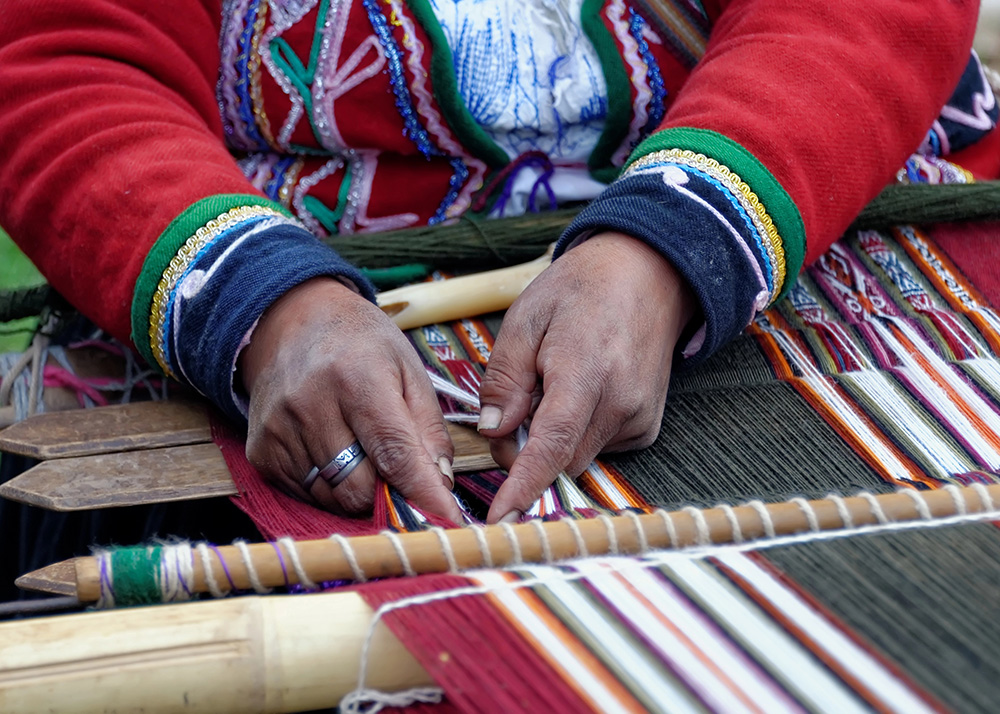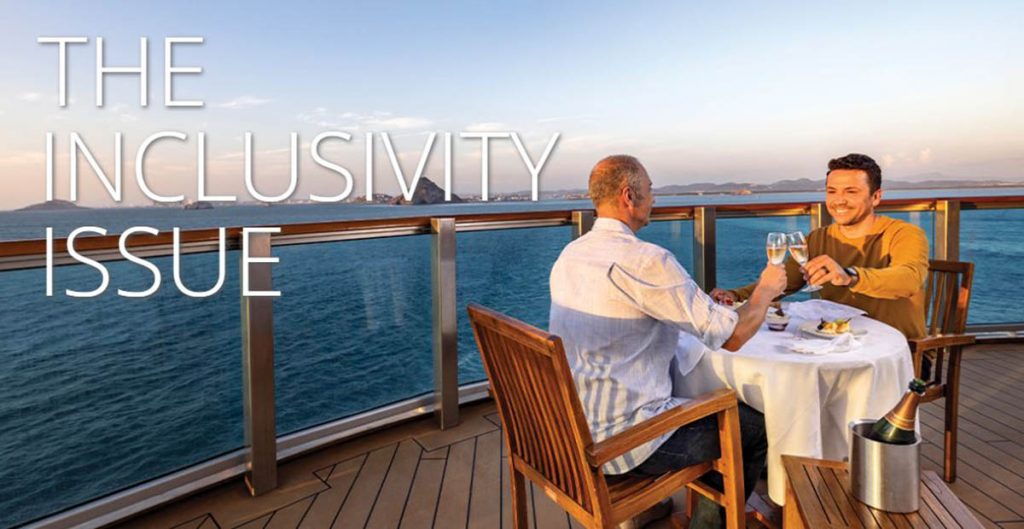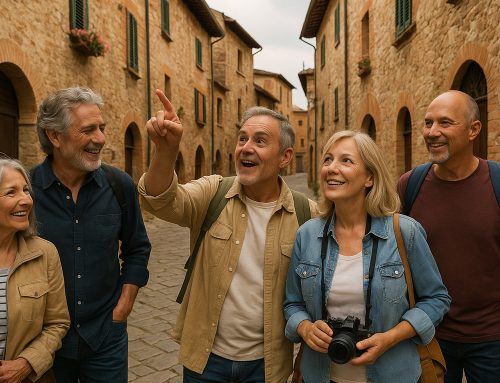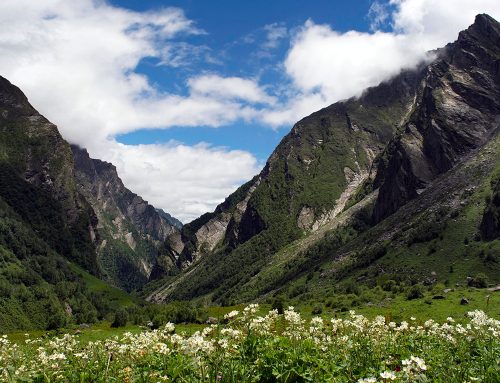"The Unvarnished Traveler" by Brian Raymond
"The Unvarnished Traveler" by Brian Raymond

Textile Workshops and Highland Rituals in Peru
The journey begins well before you arrive. It starts in your mind, long before you board a plane or lace up your walking shoes. It starts with a desire—not just to see Peru, but to feel it. To understand it not as a destination, but as something living, breathing, and human.
And high in the Andes, where snow-kissed peaks meet ancient footpaths and the clouds skim the rooftops of small adobe homes, that connection becomes something real. Something tactile. You don't just admire a culture from a distance—you sit at the loom beside it, thread in hand.
This is the world of the Andean artisans—weavers, farmers, spiritual guides—whose traditions are older than any map you'll carry. Here, travel is about meeting people whose lives are woven—literally and spiritually—into the fabric of this breathtaking land.
If you've ever longed for travel that slows your heart, stretches your mind, and brings you face to face with something timeless, the highlands of Peru offer that and more. This is a story about color and craft. But it's also a story about stillness, ceremony, and shared humanity.
The Sacred Valley: Where Threads Tell Stories
The first time you drive through the Sacred Valley, it almost doesn't feel real. The air is thinner, but somehow sweeter—cleaner. The mountains rise like guardians on either side, their snow-capped peaks sharp against a sky so blue it hurts. The river hums beside you. The light flickers between eucalyptus leaves. You start to understand that everything here has rhythm, including the land itself.
You arrive at a small weaving village tucked into the hills—maybe Chinchero, maybe Patacancha. And you're welcomed not with fanfare, but with warmth. A woman with silver braids down her back smiles at you without hurry, gesturing to come sit by the hearth.
There's a fire. A clay pot of coca tea. Laughter from a child chasing a chicken outside. Then, she begins.
She doesn't just show you her work—she tells it. Every textile is a story: the diamonds represent the stars; the stepped lines, the mountains; the checkerboard, duality—day and night, life and death, the masculine and the feminine. And all of it is made with hand-spun alpaca wool, dyed from plants and minerals foraged from the earth you're standing on.
She offers you a spindle, her fingers guiding yours. It's clumsy at first. But soon, the motion takes over. And for the first time in a long time, your hands are doing something slow. Something ancient.
You're not watching history—you're part of it now.
Weaving with Purpose: Supporting Culture, Not Consuming It
What makes this experience different from a souvenir shop in the city is intention.
You're not just buying a scarf. You're being taught what it means to make one. And in that, you're honoring something deeper.
These weaving collectives—often women-led—aren't tourist gimmicks. They're cultural preservation in real time. They're economic empowerment. They're acts of resistance against fast fashion and disappearing knowledge.
When you sit in these workshops, you contribute to something lasting. You're not just collecting memories—you're helping sustain a way of life that values community, ritual, and respect for the earth.
And maybe, as you sip that second cup of tea and admire the piece you helped begin, you start to wonder why we ever let speed and convenience steal so much meaning from the things we wear and use.
Rituals in the Mountains: Where Spirit and Soil Meet
It's early. The mist is rising from the ground, and the air smells of woodsmoke and wet stone. You're standing in a circle with a small group—locals, travelers, and a paq'o (a traditional Andean spiritual guide).
You're here for a Pachamama ceremony—a ritual offering to Mother Earth.
The paq'o speaks softly in Quechua, but the meaning is clear: gratitude, reciprocity, humility. One by one, coca leaves are passed into your hand. You press them between your fingers. You whisper a hope into them. Then, together, you bury them into the soil, alongside sugar, corn, flowers, even wine.
It's not a performance. There's no stage. No brochure. Just the land, the wind, and the feeling that something old and sacred is happening—and that you're welcome to be a part of it.
You don't need to share the same faith to feel the power in it. You just need to stand still and listen. And in that stillness, something inside you softens.
Cuzco and Beyond: The Past in Plain Sight
You return to Cuzco with a different gaze.
The city's colonial facades and cobbled streets are beautiful, yes—but now you notice what lies beneath: the Inca stonework still holding up churches, the patterns woven into street murals, the smell of earth after rain.
You pass a workshop tucked between two cafes. Inside, a young man works at a loom handed down by his grandmother. He's not trying to replicate a museum piece—he's making something new, rooted in the old, but pulsing with today.
He tells you, in perfect Spanish with a soft Quechua accent, that weaving is how he remembers his people. That every thread is a prayer.
You ask if you can buy one of his pieces. He smiles—not in the way a shopkeeper does, but like someone who's just shared something personal. He wraps it for you carefully, tells you which symbols to look for, what the colors mean.
It's not just art. It's identity. And now it's yours to carry forward, respectfully.
Why This Journey Resonates
For many travelers, especially those with a bit more life experience, the appeal of Peru isn't just the postcard views or the checklists. It's the depth. The hum beneath the surface. The invitation to slow down and engage with a culture that values memory over motion.
This kind of trip doesn't race. It breathes.
You begin to crave the early mornings and quiet conversations. The meals of quinoa soup and grilled trout, shared in clay bowls with people who look you in the eye. You fall in love not just with the place, but with how the place makes you feel—connected, grounded, curious again.
It's the kind of trip that stays with you long after the luggage is unpacked.
Planning with Purpose
If this kind of journey speaks to you—one that's rich in spirit, texture, and authenticity—this isn't something to book off a shelf. It needs to be designed with care.
As your travel advisor, I'll help you:
-
Connect with ethical, community-led artisan collectives, not tourist traps
-
Include sacred experiences that are authentic and respectful
-
Choose boutique hotels, eco-lodges, and family-run stays that enrich the story
-
Arrange pacing that allows for wonder, rest, and reflection
-
Customize cultural moments to match your personal interests—whether it's food, textiles, photography, or history
This isn't about seeing Peru. It's about knowing it.
Final Thoughts: A Journey Woven with Meaning
In the Andean highlands, the threads don't just bind wool to wool—they bind people to place, memory to meaning, past to present.
And maybe that's what we're all looking for when we travel. Not just escape, but return. A return to simplicity, to connection, to awe.
So if you're ready to travel differently—to listen, to learn, to weave your own story into the fabric of another—then let's create a journey that honors that.
Because in Peru, you don't just bring home souvenirs.
You bring home stories.
So how to choose the right vacation for you?
Vacations are an investment! With literally thousands of options, choosing the right vacation and the best value is difficult to sort through. That's where I bring my 12 years of travel experience and expertise to do this right, and get you the best value for your money. With the backing of the largest travel consortium behind me, we have options you can't find online. Plus our work just gets started once we book your dream vacation. Chat with us to learn more.
The world awaits you and we look forward to assisting you in choosing the exact right adventure on the waters or land for you and your companions!







